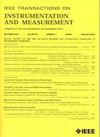基于轻量级CNN的SAR舰船目标鲁棒无锚检测方法
IF 5.6
2区 工程技术
Q1 ENGINEERING, ELECTRICAL & ELECTRONIC
IEEE Transactions on Instrumentation and Measurement
Pub Date : 2025-04-29
DOI:10.1109/TIM.2025.3563050
引用次数: 0
摘要
针对合成孔径雷达(SAR)舰船探测中近岸杂波对探测精度的影响以及复杂算法在嵌入式系统上的可部署性有限的挑战,本文提出了一种针对终端设备优化的轻型SAR目标检测算法light - yolox (L-YOLOX)。首先,我们设计了一个基于MobileNetV3块的特征提取模块,以减少传统YOLOX的参数,同时增强特征表示。此外,我们还引入了一种跨信道的局部连接结构,构建了一个高效的轻量级特征提取骨干,这有利于提高网络融合SAR舰船目标信息的能力。接下来,我们利用特征金字塔架构和扩展卷积开发了一个多尺度检测块,以提高网络的多尺度检测性能。最后,我们在YOLOX的Neck结构中集成了一个轻量级的卷积注意机制,增强了重要目标细节信息的表达,并提出了Alpha-AIoU损失函数来优化梯度传播过程和网络的权值更新。在SAR船舶检测数据集(SSDD)数据集上的烧蚀实验结果表明,我们的网络平均精度(AP)达到90.8%,优于基线YOLOX,参数减少70.1%,计算成本减少46.9%。我们的网络也显示出鲁棒性的显著增强,验证了我们创新的有效性。在SSDD和高分辨率SAR图像数据集(HRSID)上与其他最先进算法的对比实验进一步证实了我们的网络在SAR图像轻量化检测性能和一般化能力方面的优势。本文章由计算机程序翻译,如有差异,请以英文原文为准。
A Robust Anchor-Free Detection Method for SAR Ship Targets With Lightweight CNN
To address the challenges of compromised detection accuracy caused by near-shore clutter in synthetic aperture radar (SAR) ship detection and the limited deployability of complex algorithms on embedded systems, this article proposes Lightweight-YOLOX (L-YOLOX), a lightweight SAR target detection algorithm optimized for terminal devices. First, we devise a new feature extraction module based on the MobileNetV3 block to reduce the parameters of traditional YOLOX while strengthening feature representation. Additionally, we incorporate a cross-channel local connection structure to construct an efficient lightweight feature extraction backbone, which is beneficial to improving the network’s ability to fuse SAR ship target information. Next, we develop a multiscale detection block by using a feature pyramid architecture and dilated convolution to improve the network’s multiscale detection performance. Finally, we integrate a lightweight convolutional attention mechanism into YOLOX’s Neck structure to enhance the expression of important target detail information and propose the Alpha-AIoU loss function to optimize the gradient propagation process and the network’s weight update. Ablation experimental results on the SAR Ship Detection Dataset (SSDD) dataset show that our network achieves an average precision (AP) of 90.8%, outperforming Baseline YOLOX with a 70.1% reduction in parameters and a 46.9% decrease in computational cost. Our network also demonstrates a marked enhancement in robustness, validating the effectiveness of our innovations. Some comparative experiments with other state-of-the-art algorithms on SSDD and High High Resolution SAR Images Dataset (HRSID) further confirm the advantages of our network in terms of SAR image lightweight detection performance and generalization capacity.
求助全文
通过发布文献求助,成功后即可免费获取论文全文。
去求助
来源期刊

IEEE Transactions on Instrumentation and Measurement
工程技术-工程:电子与电气
CiteScore
9.00
自引率
23.20%
发文量
1294
审稿时长
3.9 months
期刊介绍:
Papers are sought that address innovative solutions to the development and use of electrical and electronic instruments and equipment to measure, monitor and/or record physical phenomena for the purpose of advancing measurement science, methods, functionality and applications. The scope of these papers may encompass: (1) theory, methodology, and practice of measurement; (2) design, development and evaluation of instrumentation and measurement systems and components used in generating, acquiring, conditioning and processing signals; (3) analysis, representation, display, and preservation of the information obtained from a set of measurements; and (4) scientific and technical support to establishment and maintenance of technical standards in the field of Instrumentation and Measurement.
 求助内容:
求助内容: 应助结果提醒方式:
应助结果提醒方式:


